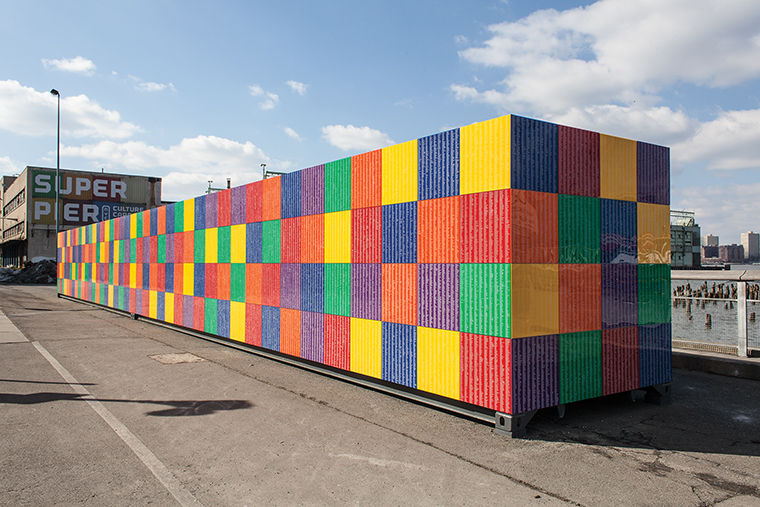Artists leave mark in Grant Park
Courtesy of Tony Tasset/Kavi Gupta
“The Artists Monument” is made of two enamel-filled etched acrylics on plywood mounted on two steel shipping containers with almost 400,000 names of artists known and unknown.
February 1, 2016
Chicago is already home to hundreds of artists, but nearly 400,000 more may soon join the city—at least in name.
Tony Tasset, an artist and professor in the University of Illinois at Chicago’s Art Department, will install a multicolored construction in Grant Park in February with two 40-foot-long acrylic panels bearing the names of nearly 400,000 artists, ranging from the most famous names in the art world to relatively obscure ones.
Tasset said the art piece aims to deconstruct the hierarchy associated with artists, especially those who are well-known.
“The idea is that the biggest artist in the world—Pablo Picasso—could be right next to someone who’s barely shown at all [or] who had one show 20 years ago at a university gallery,” Tasset said. “They’re at the exact same level as any Andy Warhol or Picasso.”
Tasset said the piece was originally designed for the Whitney Biennial, a very selective New York designed exhibition, but he wanted to subvert that process by including all the artists as he could on the art piece.
Tasset said the artists’ names on the monument are listed in alphabetical order in the same font size to represent the equal status of its artists.
“I’m not trying to compare artists,” he said. “This is a monument to creativity as opposed to a monument as a kind of destruction or memorial of a tragedy. I thought it’d be interesting to make a monument more creative—perhaps even positive—instead of a monument for a tragedy.”
According to Bob O’Neill, president of the Grant Park Conservancy and Advisory Council, the monument features artists living and deceased, and visitors can use their smart phones to look up artists they are unfamiliar with.
O’Neill also said mixing science, culture, nature and art makes for a more multidimensional experience. He said the art, in combination with the landscape, can spark conversation and create culture in the city.
“With this piece, we want more creative people and more artists in the park and using the park,” O’Neill said. “It shows a respect for art, and we want Grant Park to be known as a park that does that.”
Jessica Maxey-Faulkner, director of Communications for the Chicago Park District, said the public art installations are part of Mayor Rahm Emanuel’s larger efforts to bring public art directly into the city and its neighborhoods. Maxey-Faulkner said the installation will cost the park district $24,000.
“Whenever we are able to make art more accessible to the citizens of Chicago, we’re one step closer to our goals,” Maxey-Faulkner said.
Tasset said he hopes people will see how “ridiculously inclusive” the monument is.
“[An artist] emailed me saying he’s been depressed trying to get his work out there, but he said my piece made him feel part of a community,” Tasset said. “That was sweet. That just kind of made the whole piece for me.”








